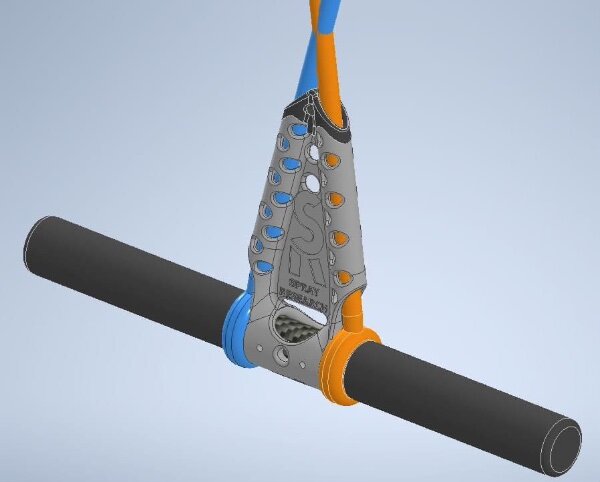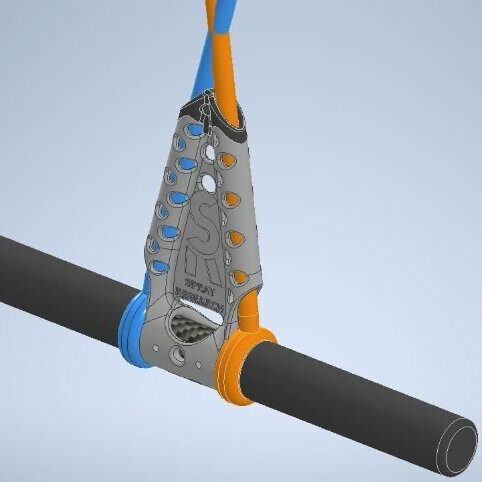New T-shaped handle to be trialed in tournaments, aims to prevent handle injuries

Image: IWWF
By Jack Burden
In a move aimed at bolstering safety in slalom skiing, the International Waterski and Wakeboard Federation (IWWF) has given the green light for a 24-month trial period of a revolutionary T-shaped handle design. Known as the “Peckham Handle,” this innovation is geared towards averting injuries caused by skiers’ arms or heads inadvertently slipping through the handle during falls.
The approval for the tournament trial underscores the potential of the T-shaped handle to mitigate risks associated with conventional handle designs. The brainchild behind this safety-focused design is Jason Peckham of New York, who conceptualized it after a personal incident where his arm got entangled in the handle during a fall.
Upon learning about the approval for the 24-month trial, Peckham expressed his elation and gratitude, stating, “I’m super excited and thankful to everyone who has supported me in getting the concept to this point!” He further underscored his commitment to the production of the approved handles, emphasizing, “I’m working on the details of producing them now. My focus to this point has been on getting it approved for tournament use.”
Injuries associated with ski handles are infrequent but can be severe, ranging from broken bones and dislocated joints to muscle tears. Particularly rare are accidents where a skier’s head goes through the handle, a scenario that can have fatal consequences.
Safety concerns around traditional handle designs have prompted numerous skiers to explore additional safety measures, such as handle guards. Companies like Masterline, KD, and InTow have introduced attachable mesh guards or head guard crossbars to reduce the risk of arm-through-handle accidents. While these additions greatly improve protection, they still work within the framework of the traditional bridle design, leaving a potential opening for accidents.
The Peckham Handle revolutionizes this approach by eliminating the bridle altogether, eradicating the risk of arms slipping through. This innovative design, however, introduces new considerations. Potential drawbacks may include safety concerns related to the handle acting as a more dangerous projectile after handle pops, posing risks for boat crews. Additionally, skier performance could be impacted, as the T-shaped handle requires adaptation to a radically different design, potentially affecting handle balance and necessitating more precise hand placement.
All these factors will be scrutinized and evaluated as the T-shaped handle undergoes more widespread use during its two-year trial period. We commend Jason Peckham for his dedication to making the sport safer, and hope the trial period will provide valuable insights into the efficacy and potential challenges associated with this groundbreaking design.

